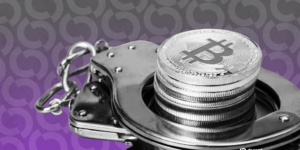Do Kwon’s Terra Trial Set for 2026—Here’s What You Need to Know
6 months ago CryptoExpert
The high-stakes trial of Terraform Labs co-founder Do Kwon is scheduled for January 26, 2026, in the U.S. District Court for the Southern District of New York. He’ll spend the next year in federal jail, after his lawyers consented to his detention.
The trial, expected to last four to eight weeks, will address criminal fraud charges tied to the catastrophic $40 billion collapse of the TerraUSD (UST) stablecoin and its sister token LUNA in 2022.
This case is a culmination of international legal battles, financial ruin, and allegations of deceit that dismantled the promises that once captivated millions of crypto investors.
Do Kwon, who pleaded not guilty to the charges last week, has been accused of multiple counts of fraud, including securities fraud, wire fraud, and conspiracy to commit money laundering.
Prosecutors allege the Terra founder orchestrated schemes to manipulate markets, misrepresent the stability of Terraform’s products, and launder proceeds through Swiss bank accounts and other blockchains.
If convicted, the 33-year-old faces a maximum sentence of 130 years in prison.
In addition to the criminal charges, Kwon faces multiple civil lawsuits. In April 2024, a New York jury found Kwon liable for fraud in a case brought by the SEC.
Terraform Labs agreed to a $4.47 billion settlement with the SEC in June 2024. The Commodity Futures Trading Commission (CFTC) has also levied allegations against Kwon, compounding his legal challenges.
Speaking to Decrypt, Sid Powell, CEO & co-founder of Maple Finance, called the Terra ecosystem collapse a “wake-up call” for DeFi, or decentralized finance—a catch-all term that describes the various protocols and platforms built around automated, crypto-driven finance products.
“When it comes to regulatory effects, lawmakers began cracking down on DeFi protocols more aggressively,” said Powell. “Developers responded by prioritizing resilience and risk management, incorporating over-collateralization models and exploring hybrid mechanisms that combine algorithmic design with collateral.”
How $40 billion was lost in days
The collapse of Terraform Labs’ ecosystem in May 2022 remains one of the most devastating events in crypto history. It wiped out $40 billion in market value almost overnight.
Both UST and LUNA were designed to work together in a system that promised stability and high returns, but flaws in its design led to a catastrophic failure. UST’s stability relied on an algorithmic system where its value was maintained through a burn-and-mint mechanism with LUNA.
When UST traded below $1, users could burn UST to mint LUNA, reducing supply and restoring the peg. Conversely, when UST traded above $1, LUNA could be burned to mint more UST.
On May 6, 2022, a large UST selloff on Curve Finance caused the stablecoin to lose its dollar peg. Panic set in, leading to mass redemptions.
As UST’s value fell, the burn-and-mint mechanism drastically inflated LUNA’s supply, diluting its value. Within days, UST plummeted to $0.13, while LUNA’s price collapsed from $64 to fractions of a cent.
The algorithmic system failed to stabilize UST, triggering a death spiral that obliterated the ecosystem’s value and impacted more than a million estimated victims.
The collapse also rippled through the crypto sector, pushing several interconnected projects into bankruptcy and contributing to the eventual downfall of the FTX exchange.
There was also reinforced skepticism toward high-yield generating crypto projects (since the crash), prompting a shift in focus toward more sustainable projects,” Sei Labs co-founder Jayendra “Jay” Jog told Decrypt. “Trust in algorithmic stablecoins—seen as innovative but inherently risky—diminished, prompting investors to focus on fiat-backed stablecoins such as USDC and USDT.”
Extradition tug-of-war
Following the TerraUSD collapse, Kwon went on the run, evading international authorities. Kwon was arrested in Montenegro in March 2023 for attempting to travel with a forged passport.
Both the U.S. and South Korea sought his extradition. Montenegro’s courts initially ruled in favor of South Korea, but U.S. prosecutors ultimately secured his extradition in December 2024.
Upon his arrival in the U.S., Kwon appeared in court and agreed to remain in custody without bail.
The Terra crash exposed the vulnerabilities of algorithmic stablecoins and unregulated financial systems. Kwon now faces trial, which will serve as a litmus test for accountability in the largely unregulated crypto space.
Edited by Stacy Elliott.
Daily Debrief Newsletter
Start every day with the top news stories right now, plus original features, a podcast, videos and more.













